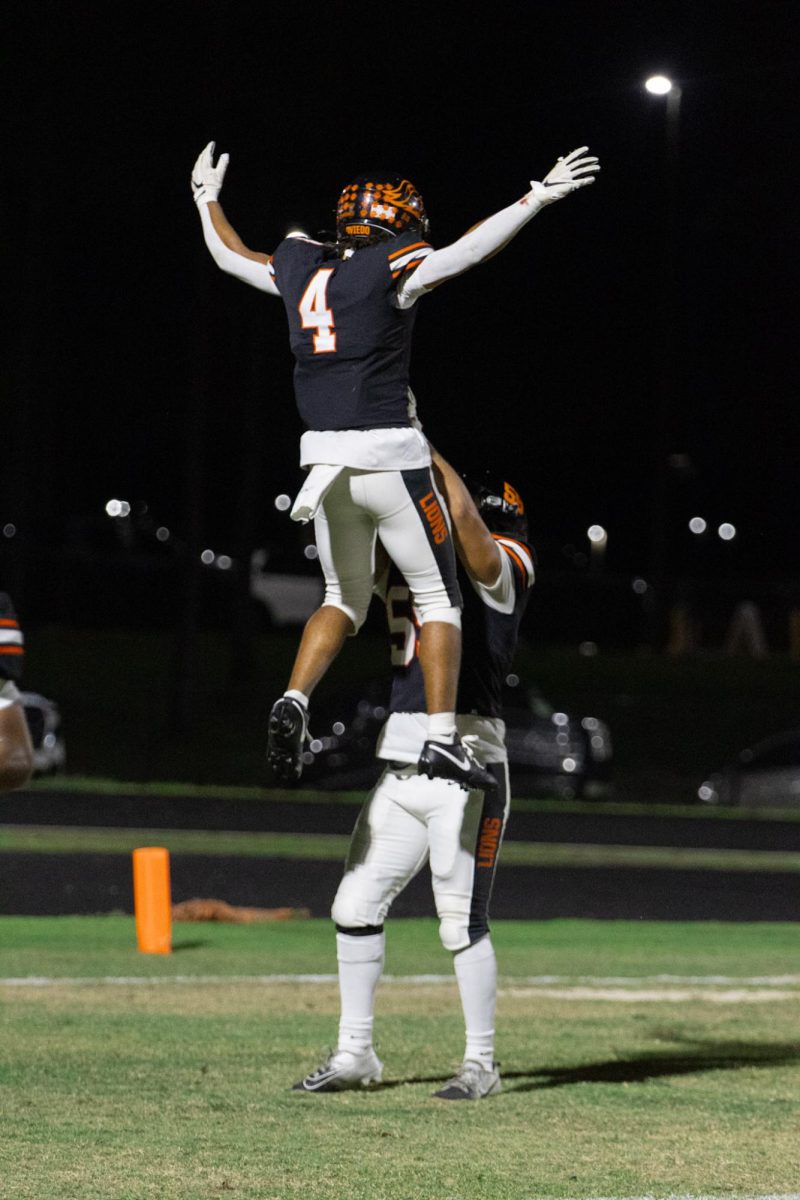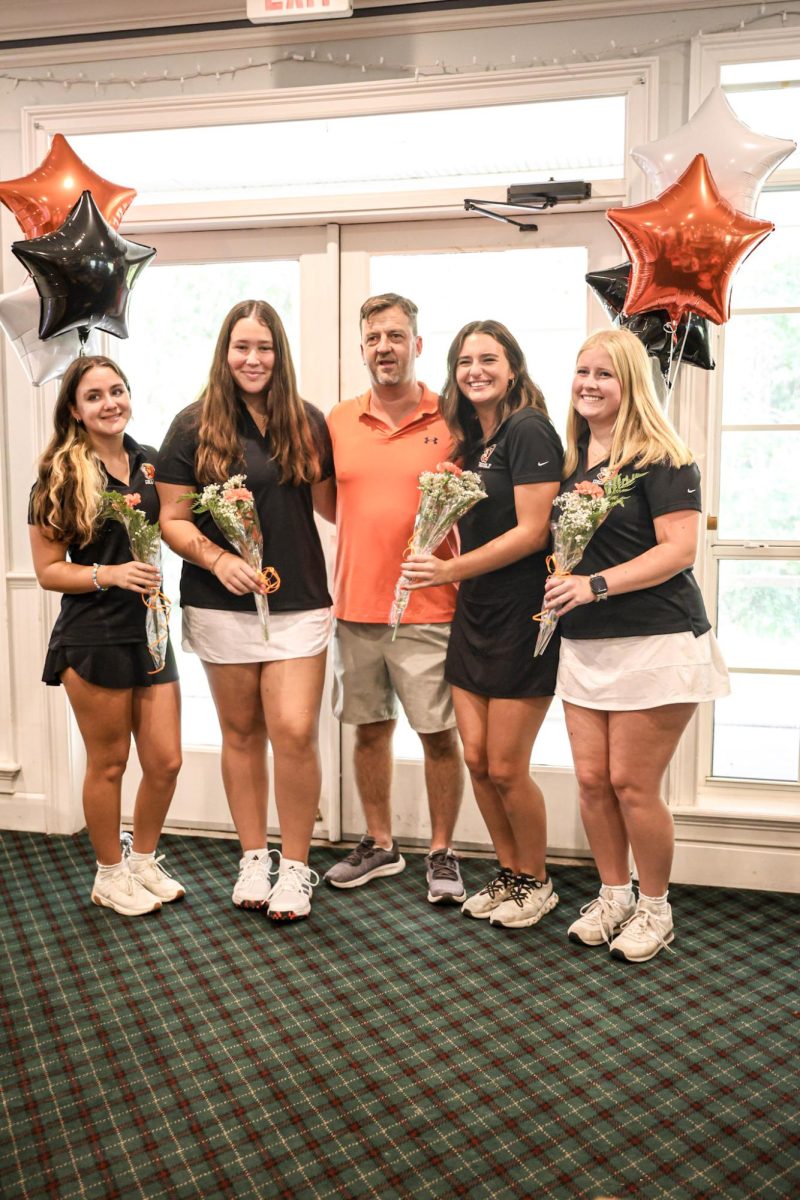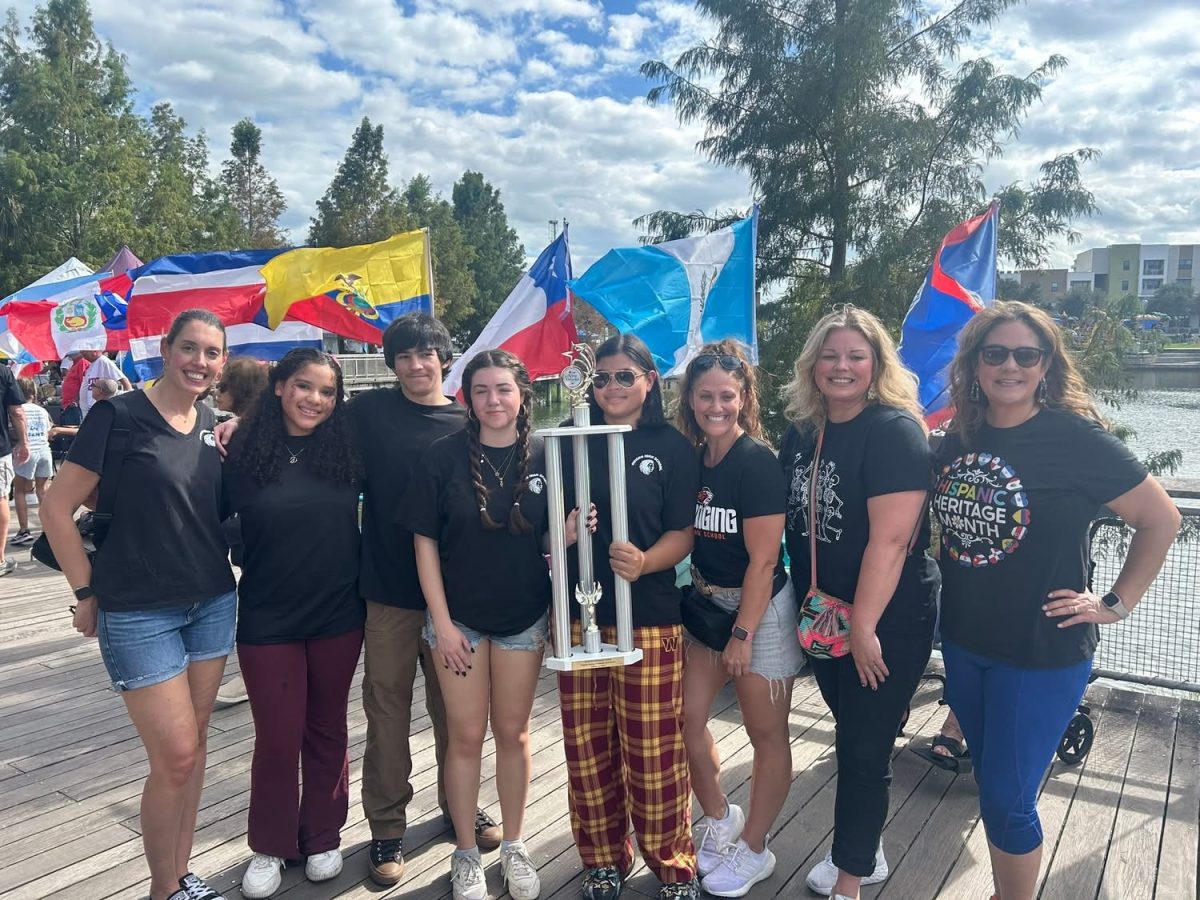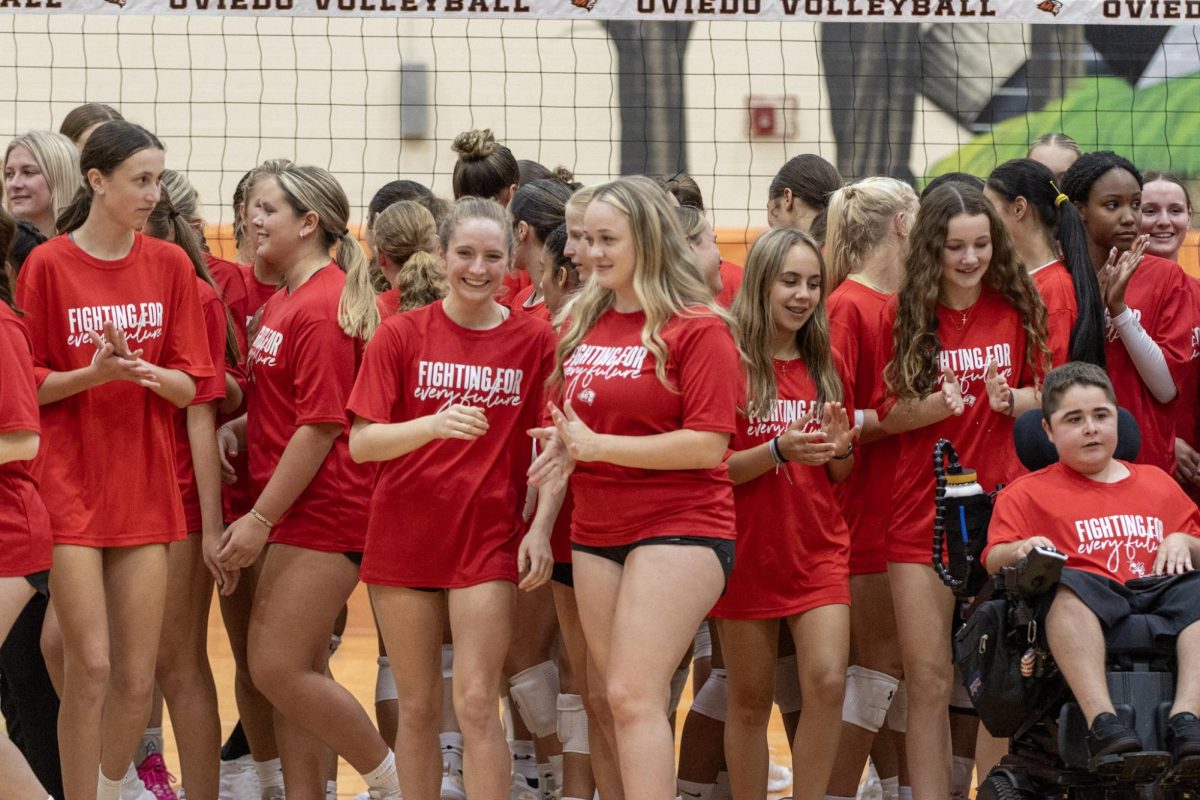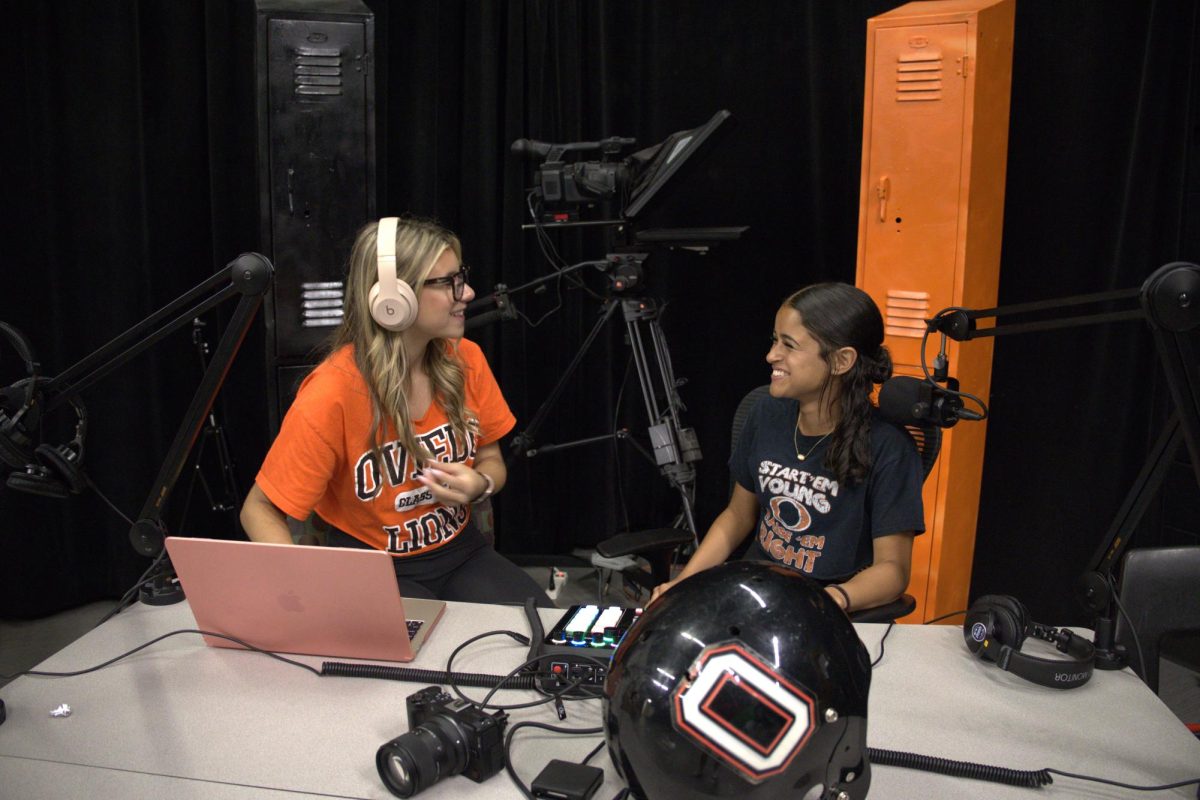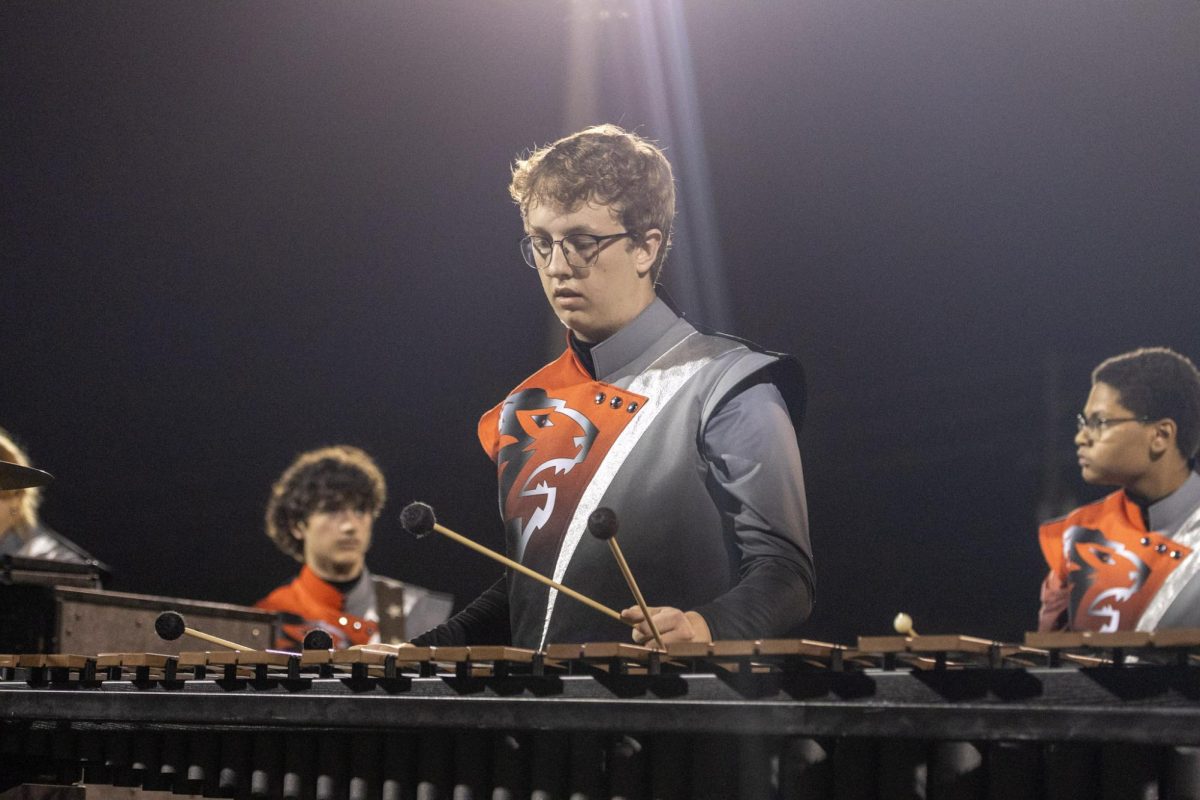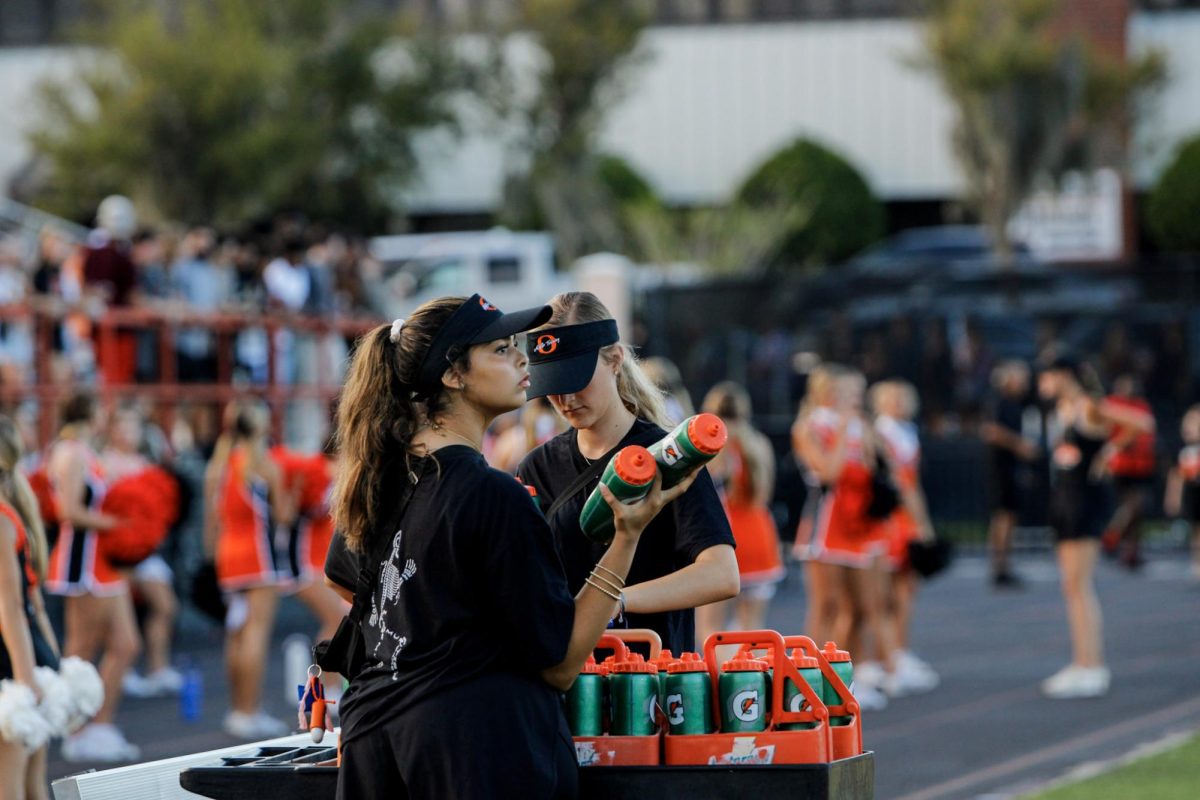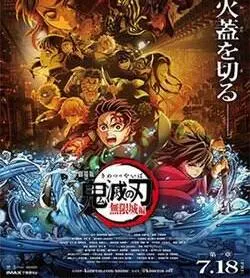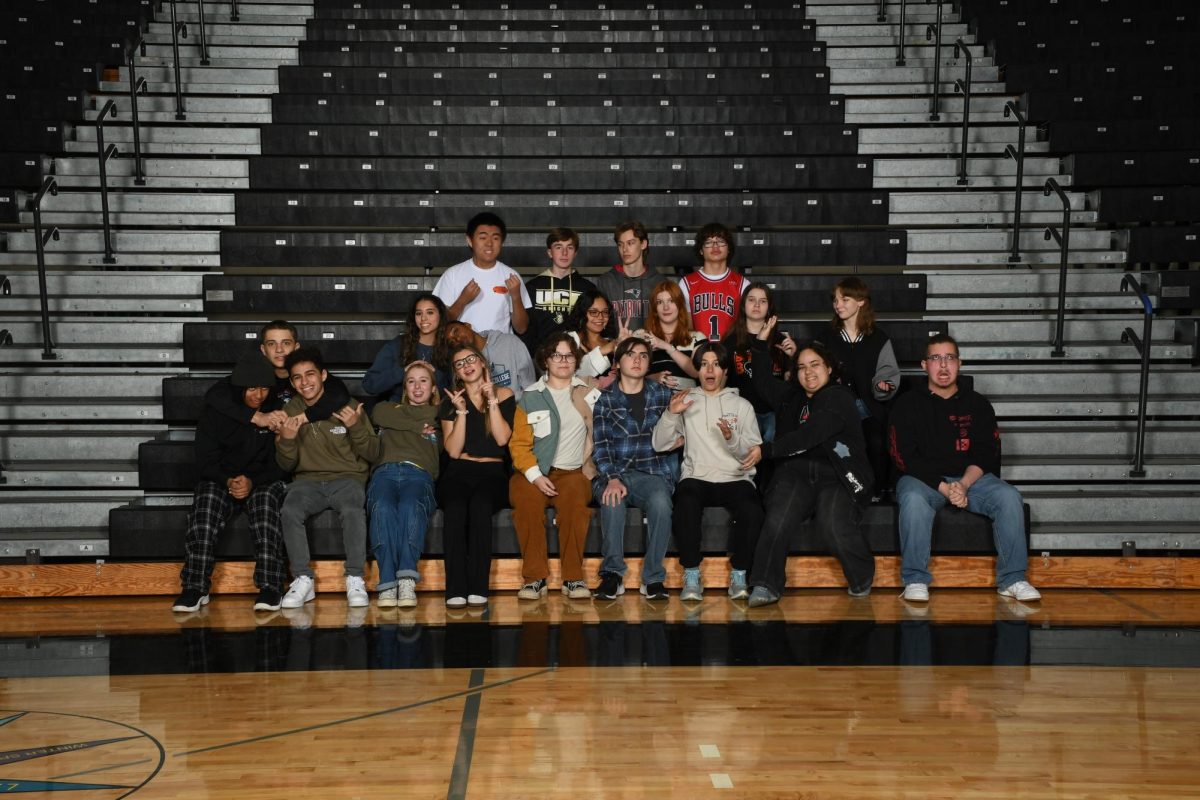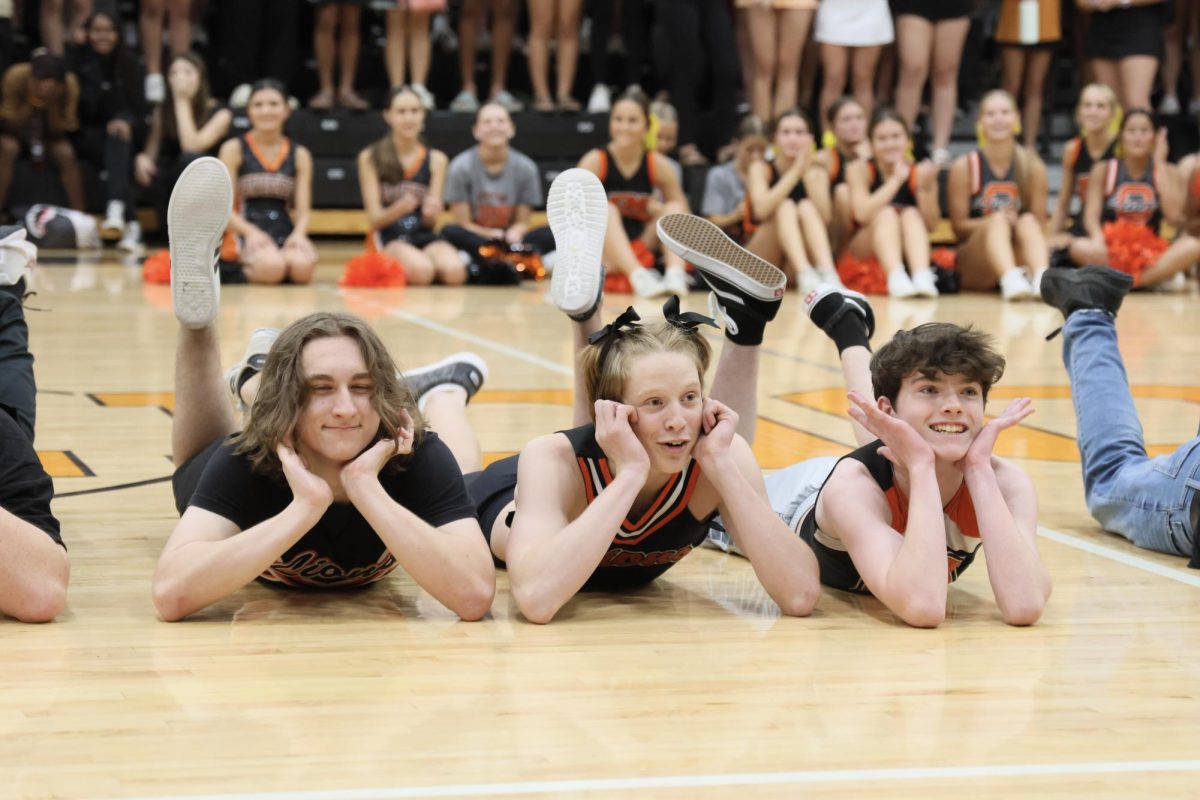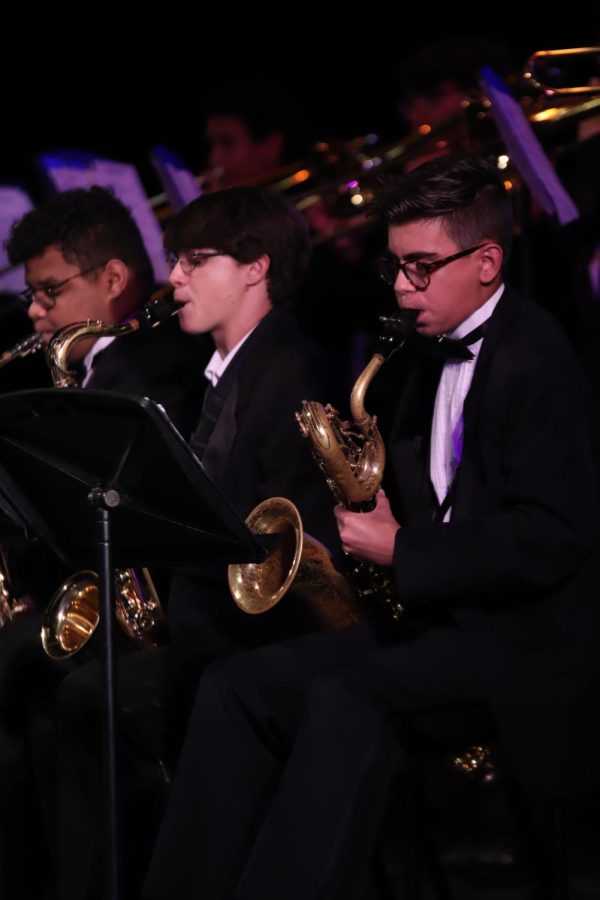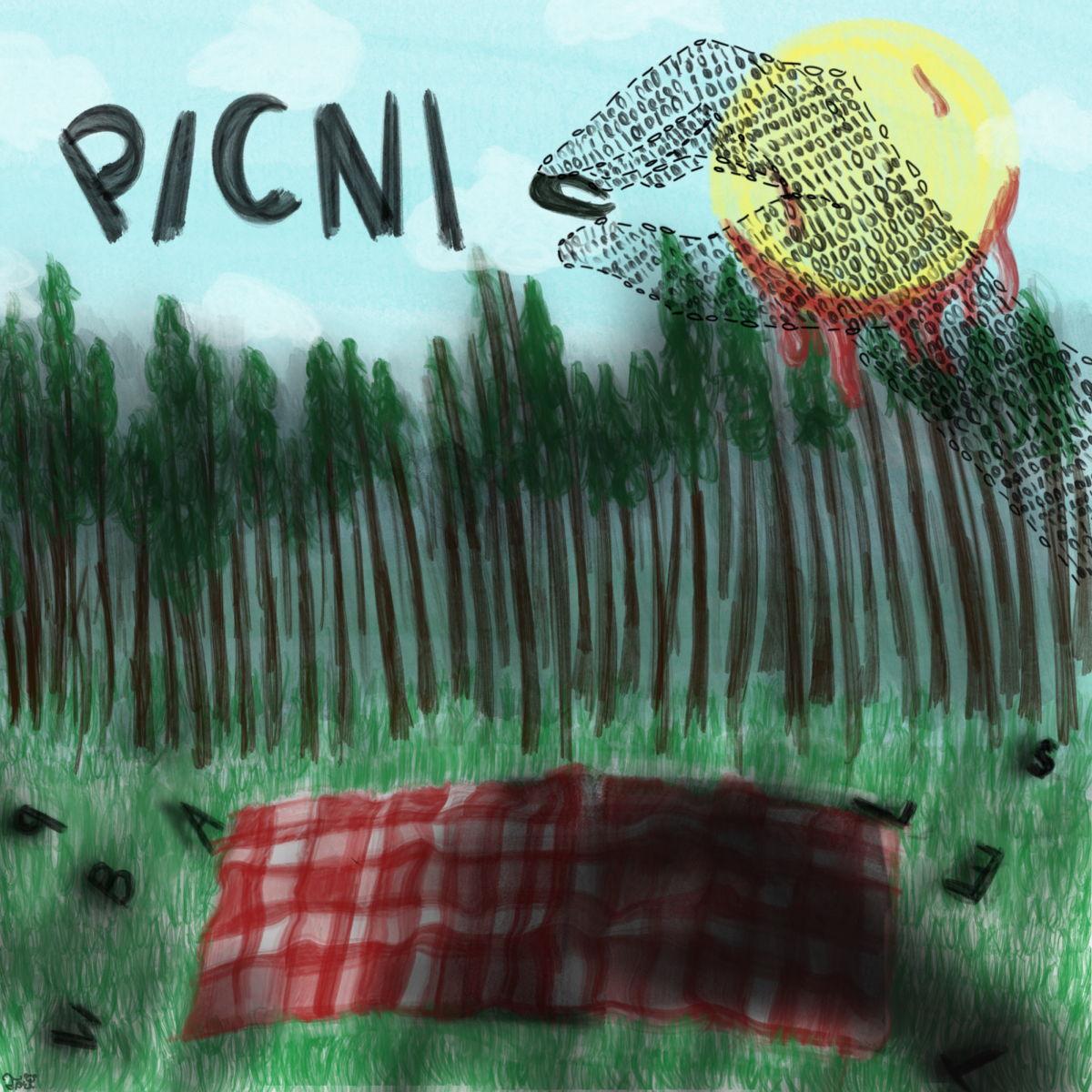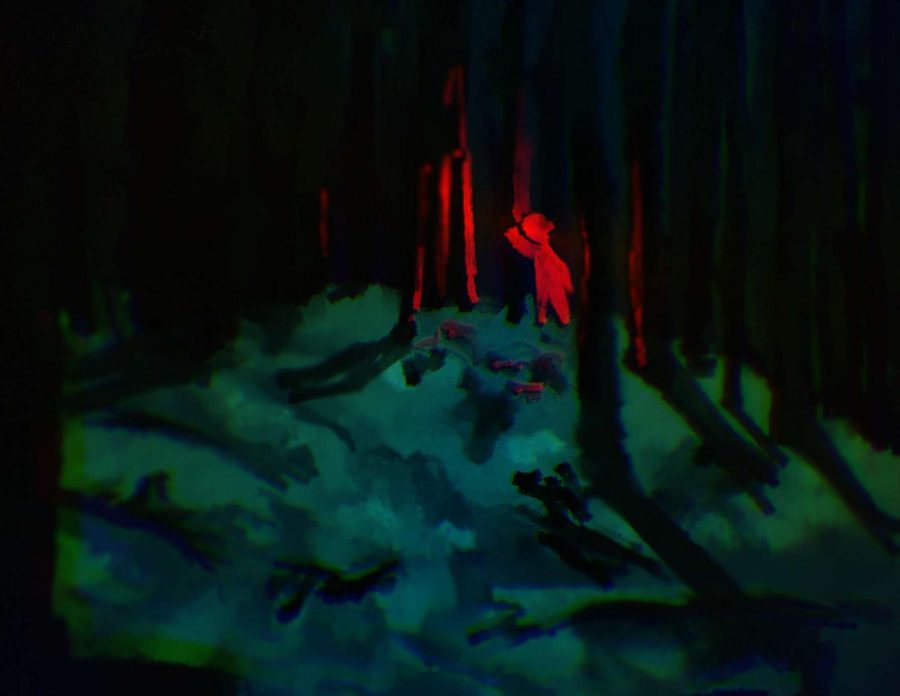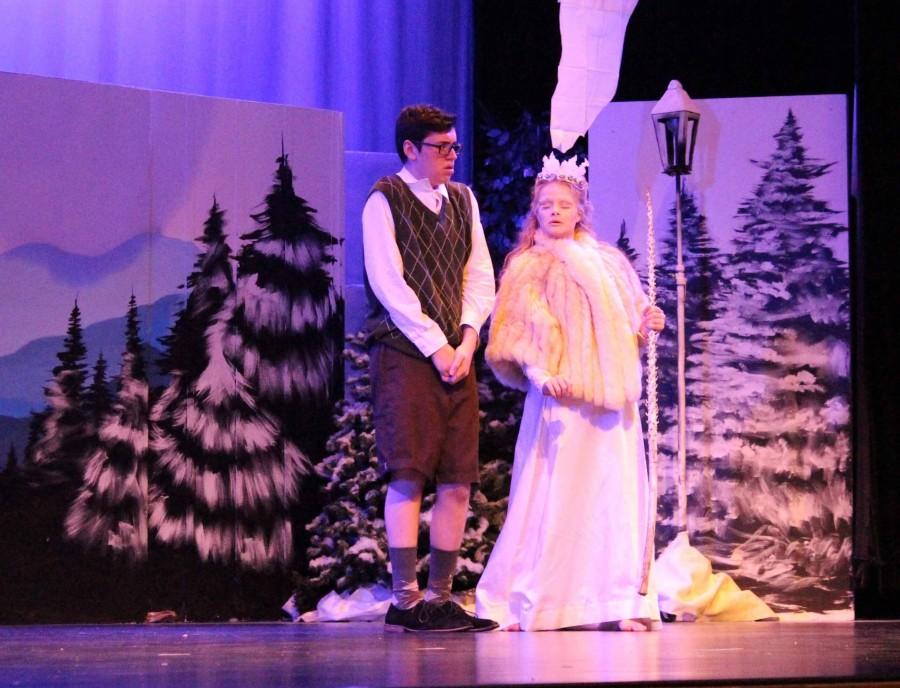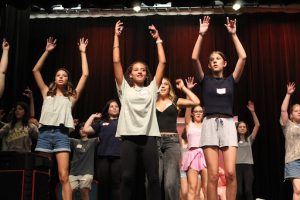Creative Castings
Drama department discusses dedication to “Narnia” play
February 28, 2016
Lights, camera, action. The audience in the Gerald Cassanova Performing Arts Center wait in anticipation for the start of the Oviedo High School Theatre department’s play, “Narnia: The Lion, The Witch, And The Wardrobe.”
In the weeks leading up to their show, the cast devoted numerous hours towards their success on stage.
“This has been one of the hardest plays I have ever done,” said show director Tim Carter. “But, with this show, the set is basically a wide open space and you have to create this wintery forest. It takes a lot of artistic planning.”
The cast worked tirelessly towards developing their respective characters.
“This cast is absolutely phenomenal. As soon as we get here, myself and the other three children go into the back of the auditorium and we start talking with our British accents to each other,” said senior Morgan Simonds, who played Susan Pevensie, the older sister.
Sophomore Maddie Barker implements her own strategies to fit the role of Lucy Pevensie.
“What I do to memorize my lines is that I record myself saying everybody else’s lines except for mine,” Barker said. “I will leave space for myself and then play back the whole entire production of myself saying other people’s lines. I will say my lines in the space for myself.”
At first, developing the character seemed daunting to the cast members.
“The first few rehearsals were a little bit challenging because you are playing someone with an accent,” Simonds said. “You need to make sure that grammatically you are saying things the correct way. Even the vocabulary that you are using. The more you rehearse, the more you don’t have to catch yourself making mistakes.”
Off set, members pull resources to further their performance in the play.
“Outside of school, I have been reading the script and digging deep, like going to the book and reading different descriptions on what Edmund is like,” said sophomore Danny Sanchez, who played Edmund Pevensie. “I watched the movie many different times to develop his character through the show, and to see how to apply that on stage.”
Simonds researched the settings during the novel’s publication.
“For characterization for Susan, I did things like watching the movie, really getting an understanding of the history behind the time period the novel was written in, what was going on in the world, and what would make Susan view the world the way she does,” Simonds said. “Portraying her on stage, I needed to make sure that everything I do, my movements, my mannerisms, any ticks, facial expressions, needed to match what would be appropriate at that time period.”
The play was modeled off of the 1950 novel, “The Chronicles of Narnia,” by C.S. Lewis. Simonds ensured that her role as an older sister was carefully exhibited.
“The story of Narnia is taking place during World War Two and the children are sent off,” Simonds said. “As the older sister, it is my responsibility to make sure that my younger sister, Lucy, does not really know that there is a war. I need to protect her from that because I don’t want her to be scared.”
The cast’s effort culminates to the final product: showcasing talent on stage.
“Honestly, there is no real way to describe being on stage,” Barker said. “You look out and the stage lights make it black, so you really can’t see the audience. It feels like you are in a room by yourself.”
Simonds agreed.
“When you first go on stage, your very first time, it is a very feeling to look out and see this audience of just seats lined up next to each other,” Simonds said. “You look out and recognize that people are going to be watching you and will be seeing the work that you have created. Really, it is just a magical feeling to put so much work into something and know that someone is going to be enjoying it.”
For Carter, rehearsal environments are hot spots of creativity.
“There are a lot of different personalities and they are all very creative in their own ways,” Carter said. “Being the drama teacher, I think it really takes some patience. Education in the theater is so much different than education in any other classroom. The students that walk through these doors are creative types. You have to know how to get along with them and how to teach them and to teach them in a way to receive what you are saying.”
The cast appreciates the director’s methodological teaching style.
“Mr. Carter has new perspectives with thespians and the drama department,” Sanchez said. “He brought a lot of new ideas that we used and taught us so well on different aspects of theater.”
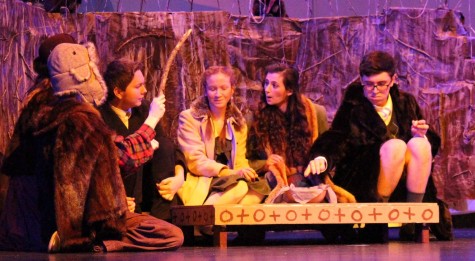
Simonds agreed.
“Something different Mr. Carter does is he will let us run through the play and then he will stop us in the middle of it, and say ‘do it this way, go back and do it again,'” Simonds said. “We will get to feel how the act is different and actually rehearse it in real time, rather than going back a few days later and saying ‘oh, I think we could have changed that.’”
As a result of the play, Barker has altered her way of life.
“I don’t let things get to me as much, trying to have that little kid mentality of Lucy,” Barker said. “When you are in high school, that is kind of hard to do because everyone is like ‘college, what did you get on this test,’ but I am just chilling.”


